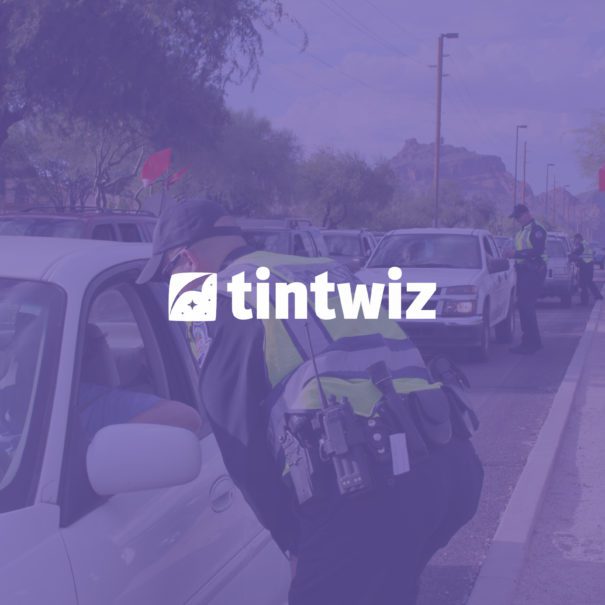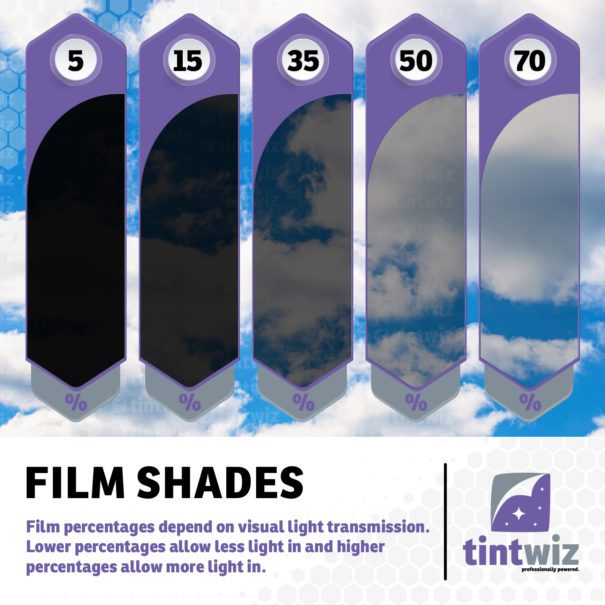Darkest legal tint for Cars in Washington DC
- Windshield: Non-reflective tint is allowed along the top of the windshield above the manufacturer’s AS-1 line or top 5″
- Front Side windows: Must allow more than 70% of light in.
- Back Side windows: Must allow more than 50% of light in.
- Rear window: Must allow more than 50% of light in.
Darkest legal tint for SUV and Vans in Washington DC
- Windshield: Non-reflective tint is allowed along the top of the windshield above the manufacturer’s AS-1 line or top 5″
- Front Side windows: Must allow more than 70% of light in.
- Back Side windows: Must allow more than 35% of light in.
- Rear window: Must allow more than 35% of light in.
Please note: The accuracy, completeness, adequacy or currency of the content is not warranted or guaranteed. We are not lawyers or a law firm and we do not provide legal advice. We recommend you consult a lawyer or other appropriate professional if you want legal advice.
Auto window tint is arguably the best aftermarket addition you can provide for your vehicle. Car window tinting can block up to 99% of the sun’s ultraviolet light, protecting the interior of the cabin against sun damage like fading and cracking that ruins the looks and value of the vehicle. Blocking UV light also protects the skin and eyes of anyone inside the cabin. Car tint can also block much of the sun’s hot infrared light, keeping the interior cooler and meaning less fuel and battery drained by the AC system.
Then of course there is the style and privacy that window tint adds to cars, both of which are prized by drivers. But privacy tint may also draw unwanted attention from law enforcement, as not all types of darker car window tint are legal in Washington D.C. To be sure your vehicle is in compliance with Washington D.C. car tint rules, you need to know the VLT rating, or visible light transmission rating, of your tint and you need to know Washington D.C. tint law VLT standards for each window of each vehicle type.
We will break all current D.C. car tint laws down below.
Windshield Tint Rules in Washington D.C.
As with many states, in Washington D.C. you may have window tint on the front windshield that is above the AS-1 line, which is a band at the top of the windshield usually demarcated with the letters and number “AS-1.” If no AS-1 line is visible, then you may legally apply windshield window tint down to five inches below the top of the windshield glass.
Windshield tint in Washington D.C. must be nonreflective, and the same rules apply to cars, trucks, and SUVs.
Car Window Tint Laws in Washington D.C.
In Washington D.C. cars, meaning specifically private sedans or coupes, not SUVs or trucks or vans, may have tint on the front side windows rated at 70% VLT or lighter, meaning the tint allows at least 70% of the visible light to pass through. This type of tinting adds some privacy but still makes it easy to see into the car, such as may be important for police during a traffic stop.
Cars may have window tint rates as dark as 50% VLT on any side window behind the driver and shotgun seat, and this same 50% VLT tint is allowed on the rear window (AKA rear windshield) of cars as well.
Window Tint Laws in Washington D.C. for Trucks, Vans, and SUVs
Under current tint law in D.C. larger privately owned vehicles, like vans, SUVs, and trucks, may have window tint at that same 70% VLT rating on the front side windows, but darker tint is allowed on windows behind the front row.
Larger vehicles in Washington D.C. can have window tint that allows in 35% or more of the sun’s visible light on the rear side windows and on the back window of the vehicle.
Other Window Tint Rules in Washington D.C.
Washington D.C. car tint laws were first enacted back in 1994 and in the intervening years, the laws have not changed much but the types of window tint for cars available have expanded and developed significantly. So pay close attention to the particular rules laid out above and when in doubt, consult a professional tint installer.
In many ways, Washington D.C. tint rules are quite flexible. No specific tint colors are banned, for example (red, yellow, and amber tinting is illegal in dozens of states, for reference), and there are no specific restrictions on reflective tint, either. However a mirrored tint that blocks the view into the car may be illegal, so use care when choosing tints with a reflective appearance.
Some medical exemptions for darker window tint are allowed in Washington D.C. so if you think you need darker tint for medical reasons, talk to a doctor who can give you a waiver to get darker tint. Just make sure you keep the documentation proving you qualify for a tint exemption in your car at all times.
At present, window tint manufacturers, vendors, and installers are not required to officially certify the tint they sell as meeting D.C. tint laws, and you are not required to apply stickers identifying your tint as legal on the vehicle. That said, police officers and inspectors can use portable devices to check VLT percentage at any time, so it’s not worth the risk of using illegal tint on a car in Washington D.C. Especially given how severe the penalties can be.
Window Tint Violations in Washington D.C.
Provided you quickly have illegal window tint removed from your car, illegal window tint tickets in Washington D.C. are not that big of a deal. A citation for illegal tint will be issued at $50, a price at which you may think of it as a “fix it ticket,” meaning a rather low cost fine that comes with compulsion to have the offending tint replaced.
However, you will have only five days after the issuing of the ticket to fix the illegal tint. After that short period has elapsed, you can be issued a $1000 fine if you don’t bring the car into compliance. And that’s a fee well higher than you will pay for simply getting the illegal tint removed and replaced. The best course of action is to get legal window tint in Washington D.C. in the first place.









